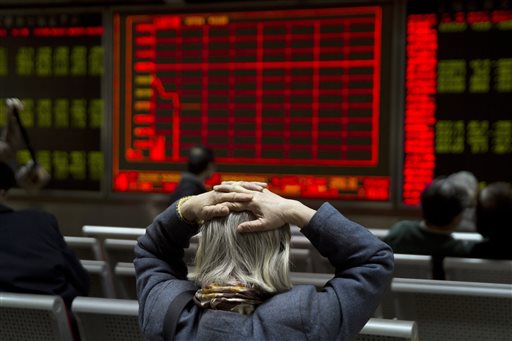-
Tips for becoming a good boxer - November 6, 2020
-
7 expert tips for making your hens night a memorable one - November 6, 2020
-
5 reasons to host your Christmas party on a cruise boat - November 6, 2020
-
What to do when you’re charged with a crime - November 6, 2020
-
Should you get one or multiple dogs? Here’s all you need to know - November 3, 2020
-
A Guide: How to Build Your Very Own Magic Mirror - February 14, 2019
-
Our Top Inspirational Baseball Stars - November 24, 2018
-
Five Tech Tools That Will Help You Turn Your Blog into a Business - November 24, 2018
-
How to Indulge on Vacation without Expanding Your Waist - November 9, 2018
-
5 Strategies for Businesses to Appeal to Today’s Increasingly Mobile-Crazed Customers - November 9, 2018
Chinese stocks volatile a day after sharp sell-off
Chinese authorities also sought to reassure markets by introducing new rules for holders of major stakes in companies: fears that an end to a six-month ban on the selling of shares by major stockholders – due to come into effect Friday – would lead to a major sell-off were seen as another major factor in this week’s market falls.
Advertisement
On Thursday, trading halted for the day after a stock index fell 7 per cent a half-hour into the trading day.
The mechanism went into force at the beginning of the year to reduce volatility on China’s erratic bourses, which went into a tailspin in mid-2015, sending jitters through world markets, but the China Securities Regulatory Commission (CSRC) acknowledged it was not having the desired effect.
On Thursday evening, regulators announced they were suspending the circuit breakers that kick in when the market falls more than 5 percent. Instead, he said, “volatility is endogenous, and is a reflection of heightened earnings risks during [the] intense reform and restructuring” that China’s economy and markets are undergoing.
The stock market has gone from boom to bust and back again more times in the past 12 months than most major peers do over the course of a decade. Even after the latest declines, the Shanghai index is up 36 per cent from October 2014. Now that growth is slowing, the challenges multiply and Beijing’s ham-fisted handling of its stock market turmoil this week is eroding the image of China’s Communist Party leaders as a skilled managers.
“I think the markets are still waiting to see what happens next week and how determined the Chinese government will be in intervening in both the equity and currency markets, to try and manage both of them. So the regional markets, including Taiwan, followed suit in moving higher”, Huang said. The stock had suffered heavy downward pressure Thursday amid worries that slowing demand for the latest iPhone models will affect the company’s bottom line after the manufacturer reported disappointing sales data for December.
Since China first devalued its currency last August, the yuan has plunged nearly 6 per cent against the U.S. dollar; the Singapore dollar has fallen 5 per cent.
European markets also fell. Reported government-backed steps to prop up the value of the yuan, which dropped to its lowest point against the dollar for five years earlier this week, in offshore trading helped calm investor sentiment. This was the first time in nine trading days that the central bank had strengthened its official rate, allowing the Chinese yuan to firm in early trade. At the moment, it appears that they are all heading south against the USA dollar and it would only be appropriate for the Singapore dollar to do the same – albeit not by the same amount – just to ensure that the economy remains relatively competitive.
“It is now the eight consecutive day (China has lowered its fixed yuan rate) and there is no clarity whatsoever as to what the endgame is”, said Jimmy Jean, senior economist at Desjardins. The US stock market has three thresholds-7, 13 and 20 percent. On Thursday, it lost 48 cents to $33.75.
Thursday’s losses mark one of the worst starts to a trading year for decades as nerves are shredded by a ideal storm of weak global growth – particularly in China – a slump in oil prices to more than 11-year lows and geopolitical tensions. The problem is, it has liberalized the stock market and the exchange rate enough for Mr. Market to get a foot in the door. That weakness is a bigger incentive for Chinese investors to sell shares and move money overseas.
Advertisement
All that money flowing out of China will have an effect on investments that have been popular with Chinese investors, including homes in Canadian cities.





























